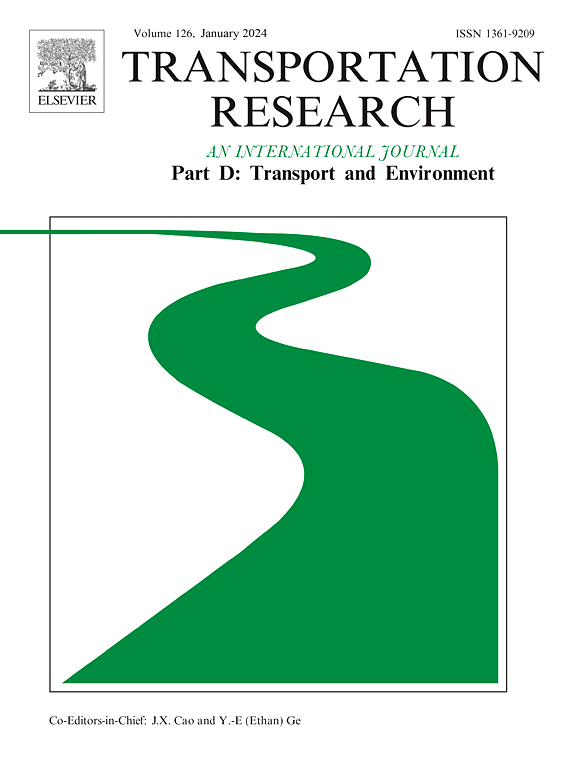Meteorological risk assessment of Canadian transcontinental freight railway
IF 7.3
1区 工程技术
Q1 ENVIRONMENTAL STUDIES
Transportation Research Part D-transport and Environment
Pub Date : 2024-11-01
DOI:10.1016/j.trd.2024.104453
引用次数: 0
Abstract
Railway transportation, integral to Canada’s supply chain, is recognized for its reliability and safety, yet its complexity introduces various risks. In this study, a meteorological risk assessment of the Canadian transcontinental freight railway is performed using a comprehensive spatial analysis. Flood (areas prone to flood risk across the province), rain (maximum daily precipitation in mm), snow (maximum snowfall in cm), minimum temperature (minimum temperature in Celsius), and wind (maximum gust speed in Km/h) have been selected as factors to generate meteorological risk maps of the Transcontinental Freight Canadian National Railway (CN) for the Saskatchewan and Ontario provinces. The study generated five integrated risk maps, varying in factor weighting approaches, including equal weight, score-based weighting, expert opinion-based Analytical Hierarchy Process, and seasonal considerations for both warm and cold seasons. These risk maps demonstrate hotspots and hazardous areas that require more attention and planning to maintain the continuity of the supply chain. The results of this study can be used to enhance safety, reduce service disruptions, and ensure the smooth operation of the railway network.
加拿大横贯大陆货运铁路的气象风险评估
铁路运输是加拿大供应链中不可或缺的一部分,其可靠性和安全性已得到公认,但其复杂性也带来了各种风险。本研究采用综合空间分析方法,对加拿大横贯大陆的货运铁路进行气象风险评估。研究选取了洪水(全省易发生洪水风险的地区)、降雨(最大日降水量,以毫米为单位)、降雪(最大降雪量,以厘米为单位)、最低气温(最低气温,以摄氏度为单位)和风(最大阵风速度,以千米/小时为单位)作为因子,生成了萨斯喀彻温省和安大略省的加拿大国家铁路(CN)横贯大陆货运气象风险图。该研究生成了五张综合风险地图,不同的因素加权方法各不相同,包括等权重、基于分数的加权、基于专家意见的层次分析法,以及对冷暖季节的季节性考虑。这些风险地图显示了需要更多关注和规划的热点和危险区域,以保持供应链的连续性。这项研究的结果可用于提高安全性、减少服务中断并确保铁路网络的平稳运行。
本文章由计算机程序翻译,如有差异,请以英文原文为准。
求助全文
约1分钟内获得全文
求助全文
来源期刊
CiteScore
14.40
自引率
9.20%
发文量
314
审稿时长
39 days
期刊介绍:
Transportation Research Part D: Transport and Environment focuses on original research exploring the environmental impacts of transportation, policy responses to these impacts, and their implications for transportation system design, planning, and management. The journal comprehensively covers the interaction between transportation and the environment, ranging from local effects on specific geographical areas to global implications such as natural resource depletion and atmospheric pollution.
We welcome research papers across all transportation modes, including maritime, air, and land transportation, assessing their environmental impacts broadly. Papers addressing both mobile aspects and transportation infrastructure are considered. The journal prioritizes empirical findings and policy responses of regulatory, planning, technical, or fiscal nature. Articles are policy-driven, accessible, and applicable to readers from diverse disciplines, emphasizing relevance and practicality. We encourage interdisciplinary submissions and welcome contributions from economically developing and advanced countries alike, reflecting our international orientation.

 求助内容:
求助内容: 应助结果提醒方式:
应助结果提醒方式:


